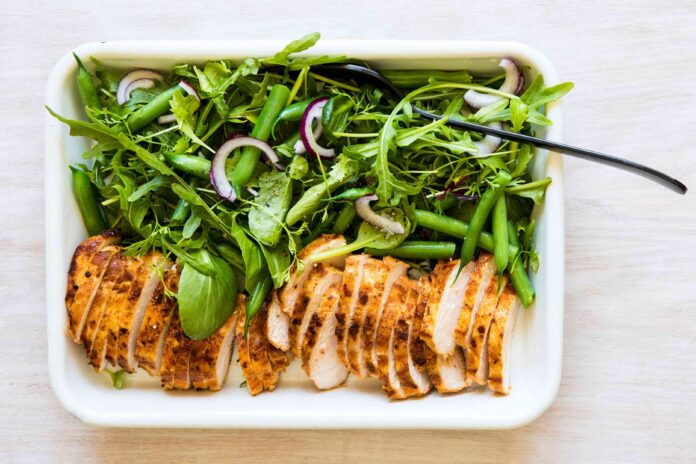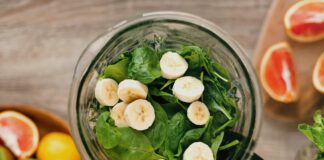Chicken is a cornerstone of many diets, providing essential protein, magnesium, selenium, and iron. However, how you cook chicken significantly impacts its health benefits. High-heat methods like frying and grilling can increase exposure to potentially carcinogenic chemicals, including heterocyclic aromatic amines (HCAs) and polycyclic aromatic hydrocarbons (PAHs). This article details the healthiest cooking methods, minimizing risk while maximizing flavor.
Why Cooking Method Matters
HCAs and PAHs form when meat is exposed to high temperatures. HCAs develop from reactions between amino acids, sugars, and creatine, while PAHs arise from dripping fats and smoke. Laboratory studies suggest these chemicals may alter DNA, potentially increasing cancer risk. While definitive guidelines are lacking, reducing exposure is a prudent approach.
The Healthiest Cooking Methods
Here are the top five methods for preparing chicken while minimizing carcinogenic exposure:
1. Poaching: Gentle Heat, Maximum Moisture
Poaching involves simmering chicken in liquid (broth, water) at low temperatures. This indirect heat minimizes HCA formation. One study showed poaching superior to other methods in reducing PAHs in rabbit meat.
How to Poach Chicken:
- Combine chicken breast (or thighs), herbs, spices, and salt in a pot.
- Cover with broth or water by about one inch.
- Bring to a gentle simmer (158-176°F).
- Reduce heat to low, cover, and cook for 10-15 minutes.
- Ensure internal temperature reaches 165°F.
2. Steaming: Retaining Flavor and Nutrients
Steaming uses vaporized boiling water to cook chicken. Research shows it generates lower levels of HCAs and PAHs, while preserving moisture, tenderness, and flavor.
How to Steam Chicken:
- Season chicken pieces with marinade, salt, pepper, or herbs.
- Place in a steaming basket over boiling water (ensure water doesn’t touch the chicken).
- Cover and cook for 15-20 minutes, until the internal temperature reaches 165°F.
3. Boiling: Simple, Healthy, and Versatile
Boiling, like steaming, uses low temperatures that minimize HCA formation. Boiled chicken breast is tender, juicy, and easily shredded for various dishes.
How to Boil Chicken:
- Place chicken in a pot and cover with water or broth.
- Add herbs, spices, onions, or seasonings for flavor.
- Bring to a boil, then reduce heat and simmer for 10 minutes until the internal temperature reaches 165°F.
4. Pressure Cooking: Fast, Efficient, and Low-Carcinogen
Pressure cooking uses steam and heat in an airtight pot to cook food quickly. Recent studies suggest it generates fewer carcinogens compared to high-heat methods.
How to Pressure Cook Chicken:
- Season chicken with salt, pepper, herbs, spices, or marinade.
- Add water to the pressure cooker.
- Place chicken in a single layer.
- Cook for 10-15 minutes.
- Allow pressure to release before venting.
5. Roasting: Moderately Healthy with Careful Control
Roasting involves cooking with dry heat in an oven. While temperatures are higher, evidence suggests roasting at up to 392°F produces relatively low levels of carcinogens due to limited direct contact with hot surfaces.
How to Roast Chicken:
- Preheat oven to 350°F.
- Season a whole chicken with herbs, spices, salt, and pepper.
- Drizzle with olive oil and roast uncovered for about 1 hour and 15 minutes.
- Ensure internal temperature reaches 165°F.
Cooking Methods to Limit
Deep frying, grilling, pan-frying, and smoking increase exposure to HCAs and PAHs. Frequent consumption of fried chicken, for example, has been linked to a higher risk of early death in postmenopausal women.
Tips for Reducing Exposure
- Avoid direct flame exposure.
- Microwave chicken briefly before high-heat cooking.
- Flip chicken frequently during grilling.
- Remove charred portions.
Healthy Chicken Meal Ideas
- Shredded chicken tacos with black bean and corn salsa.
- Chicken burrito bowls.
- Roasted chicken with steamed green beans and quinoa.
- Summer salad with poached chicken, berries, and feta.
Cooking chicken properly isn’t just about taste; it’s about minimizing health risks. By choosing lower-heat methods and limiting exposure to high-temperature cooking, you can enjoy the benefits of chicken without compromising your well-being




















